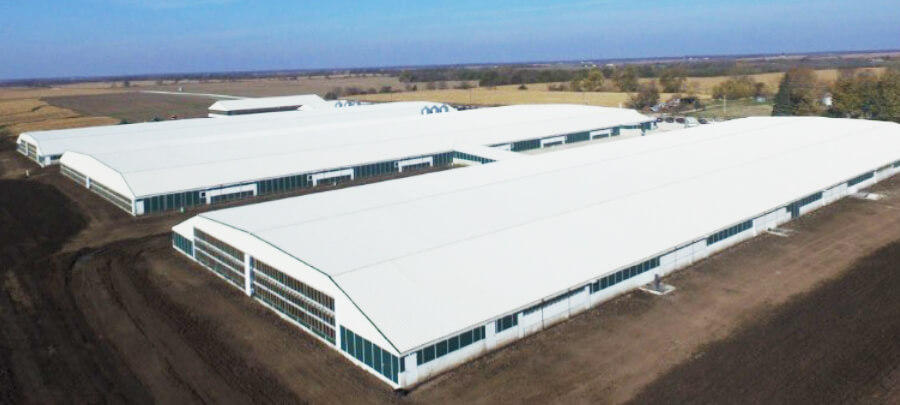Blog
Blog

Environmental control on farms for a sustainable production
11 of May of 23 - News
Having a good environmental control system adapted to the specific needs of each farm directly influences the welfare of the animals and, as a consequence, their productivity and economic results.
Good environmental control, with sufficient air renewal, correct flow, adequate temperature without significant fluctuations, adequate humidity, sufficient insulation, correct lighting,... can lead to better productive results, a higher farrowing rate, increased prolificacy, decreased of the incidence and severity of diseases (especially respiratory ones), higher average daily gain, better conversion rate, reduction of the mortality rate,... Observing the animals, we will be able to know if they are in their thermal comfort zone. In addition, a suitable environment improves the conditions of animal welfare and those of the workers, and also affects the equipment and buildings, since the performance and useful life of the facilities are increased by avoiding condensation and corrosion problems.
In this sense, there are different factors that farmers must take into account to carry out good environmental control in their facilities. The temperature, humidity, the path and speed of the air, the level of gases (such as carbon dioxide and ammonia), the light intensity,... These are factors that influence the comfort of the animals, their performance and the increase in disease susceptibility. That is why each production phase requires a specifically designed environmental control system.
For example, in the maternity ward (one of the most complex cases), the great challenge is to create two very different microclimates in a small space, since, on the one hand, the optimum temperature for the sows is around 17 degrees and, on the other, on the other, the piglets need to be between 32 and 37 degrees and completely isolated from cold surfaces and drafts. If adequate facilities are not available to control the temperature in each area and the air currents at the height of the piglets, the sows may reduce their feed intake and milk production, or the piglets may increase their mortality due to cold or flattening. Regarding this aspect, it should be noted that between 70 and 80% of piglet losses occur in the 72 hours after farrowing due to crushing, but the primary causes are usually lack of vitality due to cold and/or insufficient consumption. of colostrum and milk, or by lying next to the mother when not using the nest area due to not being at the right temperature or having a room temperature that is too high.
The environmental control system is based on entering air from outside the buildings, conditioning it (heating it, cooling it and even filtering it so that viruses do not enter the farm if necessary), distributing it properly inside the buildings ensuring sufficient air renewal without unwanted currents (in order to eliminate the gases, dust and humidity emitted by the animals) and extracting the stale air (which can be cleaned to reduce the emissions of particles, ammonia and bad odors). For this, it is of vital importance that the facilities have adequate thermal insulation, that each component of the system is correctly sized, installed, maintained and adjusted, and that the building is watertight (without unwanted leaks).
The system can be based on natural or mechanical ventilation (forced with fans), special attention must be paid to what type of ventilation may be the most appropriate:
• Natural ventilation. Based on the difference in air pressure (due to the wind) and its density (due to the difference in temperature) between the air inlet and outlet. The amount of ventilation air cannot be controlled, as it depends on atmospheric conditions.
• Forced ventilation: Forced ventilation systems could be further divided into systems. The classification is based on the technical modality used to move the air through the building. Those systems are pressure:
- Positive pressure. With fans that drive air into the interior, while the outlet is produced through openings located at different points of the building.
- Negative pressure. With fans that extract air to the outside, while the entrance occurs through openings located in walls or ceilings. It is currently the most used, easier to control and lower energy consumption.
- Neutral pressure. Fans that force the air into the building and extractors that take the air outside. They carry a higher energy expenditure.
To choose the appropriate system, a detailed study of the needs of each farm will be necessary, paying special attention to aspects such as the type of animals it houses, its geographical location, orientation of the buildings and the degree of technology, which must be adequate for maximize the welfare of the animals, their productive performance and the economic benefit of the farm.






